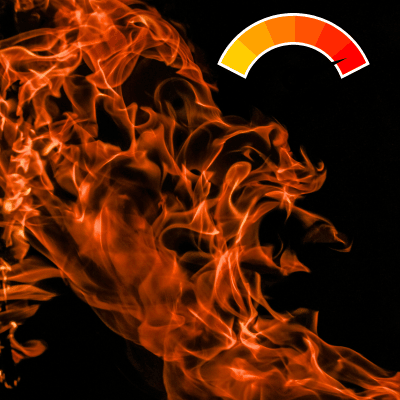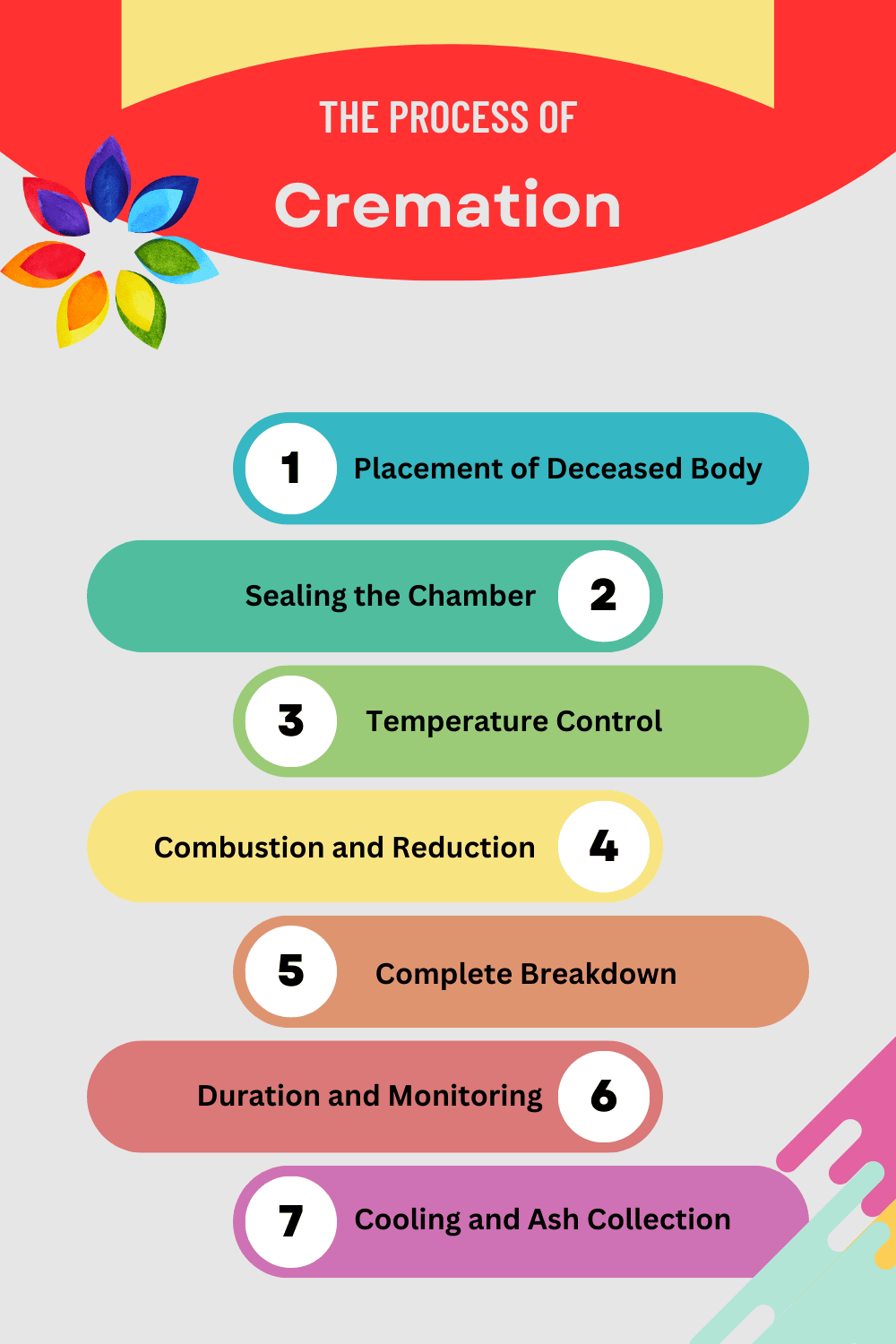A retort chamber (for humans), also known as a cremation chamber or crematory retort, is a specialized facility or chamber used for the cremation process. Cremation is a funeral practice that involves the combustion, vaporization, and reduction of human remains into ashes. The retort chamber is the primary equipment where the actual cremation takes place at the crematory. For information on the history of cremation see our blog article. For information on our cremation packages refer to our site.
Structure and Design For Cremation Retorts
Typically, one constructs a retort chamber using fire-resistant materials such as refractory bricks and stainless steel. The design of the chamber enables it to withstand high temperatures and ensure the containment of heat and gases that the cremation process produces.
Refractory Bricks
Alumina, silica, or magnesia are the main ingredients in refractory bricks with excellent heat resistance. The designers specifically created these bricks to withstand high temperatures without breaking or degrading, ensuring the structural integrity of the retort.
Stainless Steel
Stainless steel is a durable and corrosion-resistant material commonly used to construct retort chambers. It can withstand high temperatures and is well-suited for containing the heat and gases produced during the cremation process.
High-Temperature inside the Retort
The design of a retort chamber focuses on withstanding and containing the high temperatures reached during cremation. We select fire-resistant materials (as mentioned above) for constructing it based on their ability to withstand intense heat without deforming or compromising the chamber’s integrity. However, regular maintenance is still necessary.
Variables such as the intensity and frequency of cremations, the type of fuel used, and the quality of the blocks themselves can affect the rate of deterioration. Regular inspections at the crematory aid in identifying any signs of damage, erosion, or cracks in the bricks, and we typically promptly carry out a replacement as needed.
The temperature inside a cremation chamber reaches between 1,400 to 1,800 degrees Fahrenheit.
Containment of Heat and Gases inside cremation chamber
The retort chamber is designed to contain and manage the heat and gases produced during cremation, which is crucial for safety and efficient operation.
Heat Containment
The fire-resistant materials used in the chamber’s construction, such as refractory bricks and stainless steel, have low thermal conductivity.
This property helps to contain and minimize heat loss, ensuring that the chamber reaches and maintains the necessary high temperatures for the cremation process.
Gas Containment
During the body’s combustion and evaporation, gases are emitted. The retort chamber is designed with seals, closures, and insulation to stop these gases from escaping into the environment. Effective gas containment minimizes potential environmental effects while preserving a controlled and effective cremation process.
By utilizing fire-resistant materials like refractory bricks and stainless steel, retort chambers are constructed to withstand the extreme temperatures during cremation. At the same time ensuring the containment of heat and gases. These design features promote safety, efficiency, and environmental responsibility in cremation.
Heating Systems for Cremation Chambers
A retort chamber’s heating system is critical in facilitating the cremation process. Retort chambers can utilize different heat sources to generate the intense temperatures required for cremation. A retort chamber’s heating system is critical in facilitating the cremation process. Retort chambers can utilize different heat sources to generate the intense temperatures required for cremation. The most common heat sources include:
Gas
Many retort chambers incorporate gas burners that utilize natural gas or propane as fuel sources. Gas burners produce a controlled flame that provides consistent and efficient heating. Gas is the most commonly used fuel type.
Oil
Some retort chambers may use oil burners, which utilize heating oil as fuel. Oil burners work similarly to gas burners, generating the necessary heat for the cremation process.
Electric
Electric heating elements are an alternative heat source in some retort chambers. Electricity powers these elements, generating heat through electrical resistance, and raising the chamber’s temperature.
Using electricity to power the retort is more environmentally friendly, producing significantly fewer pollutants, mainly CO2. There are no electric human retorts in the US, but they are used in other parts of the world.
Heating Efficiency: and Temperature control
The heating system is designed to attain and sustain high temperatures within the retort chamber. Efficiency is key to ensuring the cremation process is effective and timely. The heating elements or burners are carefully calibrated to provide consistent heat output, optimizing the combustion and vaporization of the remains.
Retort chambers are equipped with temperature control systems to regulate the heat within the chamber. These systems monitor and adjust the temperature throughout the cremation process to ensure it remains within the desired range.
Airflow Control
Safety Measures
Safety precautions are built into retort chambers to guard against potential dangers. Flame monitoring systems, temperature sensors, and safety shut-off mechanisms that engage in the event of abnormal conditions. The specific heating system design and components can vary depending on the manufacturer and model of the retort chamber. Crematories adhere to local regulations and industry standards to ensure the safe and efficient operation of the heating system during the cremation process.
Control Systems
The Cremation Process – Step by Step
Placement of the Deceased Body: Once the deceased body is respectfully prepared and placed inside the retort chamber, cremation is initiated. The body is positioned in a manner that ensures proper and efficient combustion.
Sealing the Chamber: We securely seal the retort chamber after placing the body inside. This sealing process is essential to create a controlled and contained environment for the cremation process.
Temperature Control and Increase: With the chamber sealed, the heating system within the retort chamber is activated. We gradually raise the temperature to reach the optimal cremation range, typically between 1,400 to 1,800 degrees Fahrenheit (760 to 982 degrees Celsius). The cremation process’s specific temperature ranges and duration can vary depending on local regulations, cultural practices, and equipment.
Combustion and Reduction: The body undergoes combustion as the temperature increases within the retort chamber. Organic matter, such as flesh, organs, and soft tissues, is broken down and reduced to its essential elements through intense heat.
Complete Breakdown: The high temperatures facilitate the breakdown of the body into its essential elements, primarily bone fragments. The intense heat reduces the body to its inorganic components, including bones and other non-organic materials.
Duration and Monitoring
The cremation process typically takes a few hours, but the exact time can vary depending on factors such as the size and composition of the body. We closely monitor the temperature and other variables throughout the process to ensure the efficiency and completion of the cremation.
The Final Cremation Step – Cooling and ash collection
The retort chamber can cool down once the cremation is complete. After cooling, the remaining bone fragments, cremated remains or cremains, are carefully collected from the chamber. Any non-organic materials, such as dental fillings or metal implants, are typically separated and removed, however, gold fillings have usually evaporated from the intense heat.
Cremation Chamber – Conclusion
Efficiency in retorts is a crucial consideration for crematories, as it impacts energy consumption, emissions, throughput, and overall operational effectiveness. Different types of retorts offer unique advantages and improve cremation practices’ efficiency. It’s important for a crematory to carefully evaluate its specific needs, capacity requirements, and local regulations when selecting the most suitable retort type for its facility. Cremation chambers are of different efficiencies as well. Some will take 3 hours to cremate a body, while others will take only one hr.



